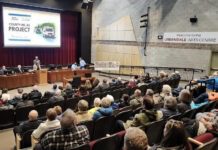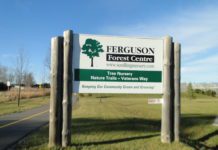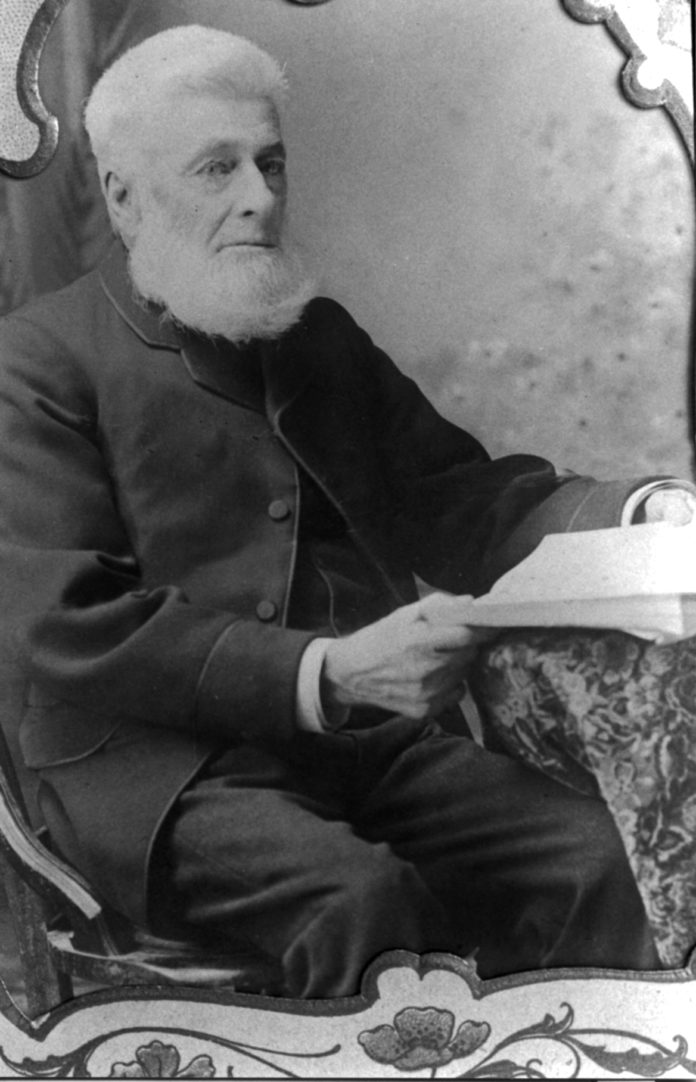When the Township of South Gower was amalgamated with Oxford-on-Rideau and the Town of Kemptville in 1998, it officially ceased to exist. But that was not the first time that the boundaries and identity of South Gower has been changed. In fact, for quite a lot of its history, South Gower was very difficult indeed to define.
When the Crown decided to fill in the territory between Oxford, Marlborough and the townships fronting on the Ottawa River, it engaged surveyors to undertake the job of laying out four townships in all. These became the Townships of Nepean, Gloucester, Osgoode and Gower. Note: that is Gower, not South Gower, because, for decades after the survey, what we know as South Gower and North Gower were one township.
There is also some debate about how the township got the name “Gower” in the first place. Almost every other township in the region is either square or rectangular; but Gower was a very unusual shape, and, for some, that explains the name. It was a gore in shape, an irregular piece of territory lying between other, regularly shaped lands. Hence “gore” became “gower”, for some reason. This is the explanation given by Thaddeus Leavitt in his History of Leeds and Grenville, published in 1879.
But it should be remembered that all the other townships in eastern Ontario were named after people and places in England, contemporaries of the first surveys in the 1790’s. The line of townships along the Saint Laurence were named after the King’s family: Elizabeth, Augusta, Edward, etc. Oxford was named after the University city, while Wolford got its name from the home estate of the Lieutenant-Governor, John Graves Simcoe. Marlborough, Montague and the others also got their roots in England.
The Township of Gower seems to have been named after Admiral John Leveson-Gower, Lord of the Admiralty from 1783 to 1789. He was a son of John, the first Earl Gower, and served in the Royal navy, being Captain of H.M.S. Victory, later to be the flagship of Nelson at Trafalgar. Gower had died in 1792, during the time when the townships were being planned. This seems a far more likely source for the name “Gower” than any reference to its strange shape.
In September, 1793, Surveyor General, D. W. Smith, instructed John Stegman to lay out the borders of the four townships, but noted, regarding the part of Gower south of the Rideau, that it “need not be run into Lots at present”. It seems that it was only around 1794 that the boundaries were actually surveyed, and not until 1799 that the first five Concessions and half of the sixth were laid out by Lewis Grant, Provincial Land Surveyor.
In 1830, James West was sent to lay out the remaining concessions, and his Diary reveals a lot about the condition of the land at that time. He left his home in Matilda Township at 8 am and reached lot 2 in the 6th Concession of Mountain, a distance of 22 miles, by 6:30 that night, having to travel through “bad swamp roads, carrying my surveying instruments and some other necessaries”. He worked through August and September to survey Concessions 6 to 9, often commenting on the swamps, the thick tamarack, cedar and alder trees, and the lack of roads. When he finished and travelled home to Matilda, he had to go south to Johnstown and back north again to Matilda, as there was no passable road direct from South Gower to his home. The route he had taken to reach Gower in August was no longer available: “It will be understood that there is no passable road from S. Gower to Matilda only by Johnstown, except in very dry weather when one may pass through the centre of Matilda and through Mountain, which way I went when going, but it had rained so much by the time I returned that when I inquired if I could go it I was told I might if I had a canoe to sailing, for there was miles which would require one. This will account for my being longer coming home and going”.
The manner in which the township was surveyed differed north and south of the Rideau, so that the concessions in South Gower run south to north, while those north of the river were surveyed to run east to west. In addition, part of North Gower included land on the south side of the river, so when the two sections were separated in 1845, South Gower found itself with two Concessions 2 and 3, at either end of the Township, as it is still today.
A further complication arose when it was later discovered that no-one was sure whether the concession roads ran to the north or south of the concession lines. This meant that a land owner could find that his home was a great distance away from the road, whereas he had built it thinking it was beside it. Surveying was not necessarily an exact science when it came to South Gower.






